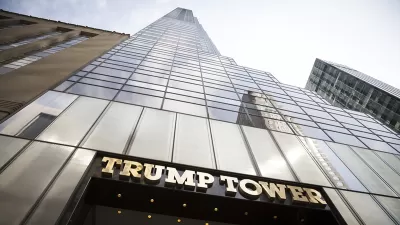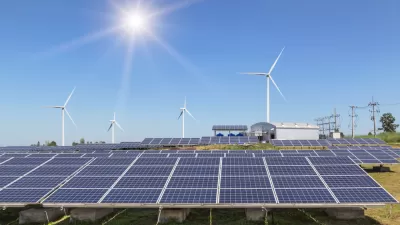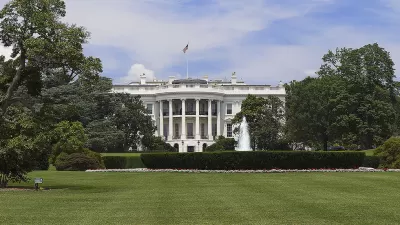Urbanists consider what the administration of President-elect, Donald Trump, will mean for cities.

With any more traditional Republican candidate who takes over after a Democratic administration, even a casual observer would expect there could be large-scale changes to immigration, birth control, environmental issues, gun control, and, probably, trade policy. After an election where a non-traditional Republican takes over after an election that also returned both houses of Congress to the Republican party, one would imagine that the changes would be that much more sweeping and swift. Republican politicians have an opportunity that hasn't existed in nearly a decade. In the Republican-dominated period between 2003 – 2007, a period that saw the invasion of Iraq and the partial-birth abortion act; it was also a time when the newly signed Patriot Act and newly created Department of Homeland Security became expanded and entrenched.
To narrow the scope of the question, Anthony Flint writes about the way the physical infrastructure of cities could be affected focusing on the "nuts and bolts." Trump's advisors have already proposed creating more than a trillion dollars of private infrastructure. The infrastructure would not all be new, it would also involve privatizing many miles of highways and bridges.
As far as allocating federal dollars for cities, Flint suggests that it’s unlikely, "The thinking among policymakers and elected officials has been that cities are on their own. That is certainly true in terms of federal funding; cities rely on state funding and “own source” revenue." That's not new policy though, Flint concedes, "The President’s FY 2017 Budget provides the U.S. Department of Housing and Urban Development with $48.9 billion in gross discretionary funding and $11.3 billion in new mandatory spending over 10 years, primarily for housing."
Issues of environmental and climate policy will be likely to affect cities. Trump has voiced his skepticism of climate change. Federal policy regarding climate change has myriad impacts, "Not only the role of alternative energy innovation in urban economies, but plans that cities around the country are making to prepare for the inevitable impacts of global warming: the burgeoning field of resilience and adaptation. Girding for sea-level rise is yet another task that is going to cost a lot of money, and require innovation in climate infrastructure finance."
Any discussion of cities, unfortunately, will involve a good deal of speculation, because many of the problems facing cities were ignored during the presidential campaign. "A national urban policy never got discussed in the campaign, despite the party conventions being held in two struggling post-industrial cities," Flint says.
FULL STORY: How to Start Thinking About What a Trump Presidency Means for Cities

Maui's Vacation Rental Debate Turns Ugly
Verbal attacks, misinformation campaigns and fistfights plague a high-stakes debate to convert thousands of vacation rentals into long-term housing.

Planetizen Federal Action Tracker
A weekly monitor of how Trump’s orders and actions are impacting planners and planning in America.

In Urban Planning, AI Prompting Could be the New Design Thinking
Creativity has long been key to great urban design. What if we see AI as our new creative partner?

Making Shared Micromobility More Inclusive
Cities and shared mobility system operators can do more to include people with disabilities in planning and operations, per a new report.

Car Designs Make it Harder to See Pedestrians
Blind spots created by thicker pillars built to withstand rollover crashes are creating dangerous conditions for people outside vehicles.

Cal Fire Chatbot Fails to Answer Basic Questions
An AI chatbot designed to provide information about wildfires can’t answer questions about evacuation orders, among other problems.
Urban Design for Planners 1: Software Tools
This six-course series explores essential urban design concepts using open source software and equips planners with the tools they need to participate fully in the urban design process.
Planning for Universal Design
Learn the tools for implementing Universal Design in planning regulations.
Appalachian Highlands Housing Partners
Gallatin County Department of Planning & Community Development
Heyer Gruel & Associates PA
Mpact (founded as Rail~Volution)
City of Camden Redevelopment Agency
City of Astoria
City of Portland
City of Laramie




























